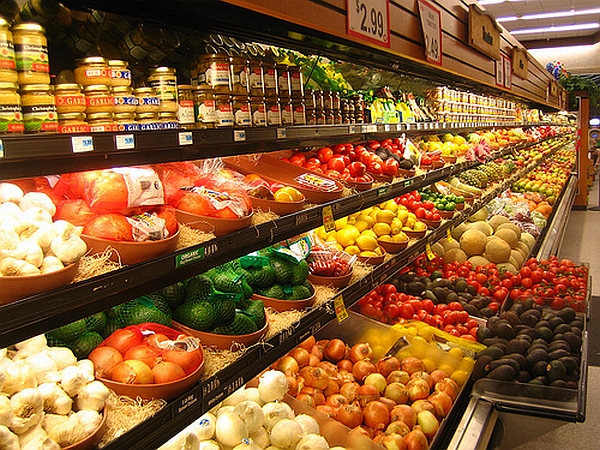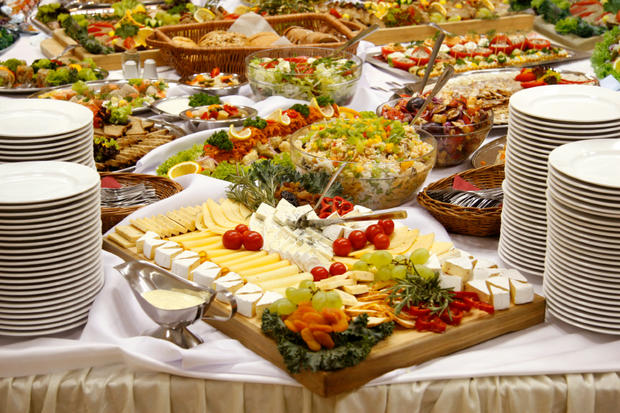
The changing economic and financial landscape has seen many people adopt frugality and simplicity as a new way of life. Not all people who choose these alternatives are doing it out of financial constraints or in an effort to save money. For many, it is a realization that many of the ills that afflict modern society, arise out of thoughtless over consumption and the pursuit of a materialistic lifestyle.
Many frugal thinkers target the smaller numbers on your monthly budget as a starting point, since those transitions are relatively less painful. Others focus on non-essentials like entertainment, energy wastage, and fashion. Not a lot of people give thought to food. Here is a look at some ways that you can save money on food without compromising on the health and nutrition of your family.
1. Go Shopping For Groceries and Provisions After Meals
Research has established that people tend to shop more and make a higher number of impulsive buying decisions when they visit the supermarket on an empty stomach. Make it a point to visit the stores after a good meal, so that you are not tempted to stock up on things that are not essential.
2. Keep Leftovers In Full View
When organizing the fridge at the end of the day, the common tendency is to push the leftovers to the back of the shelf. As a result, they stay at the back till you discover it one fine day and decide to trash it since it has been in the fridge way too long for your liking. Keep leftovers right in front so that you are always aware of their presence and process them first.
3. Make a List Before You Go Shopping
Take a thorough inventory of your pantry, your kitchen shelves, and your fridge, before you step out to buy groceries and provisions. You can even consider making it a habit to organize the storage space before you step out, so that you have enough space to keep what you get, as well as get in touch with what you already have. List out everything in your pantry and fridge and stick the list somewhere prominent in your kitchen. As you finish one item, cross it out on your inventory list and add it to your shopping list.
4. Make a Menu Plan
Plan your meals ahead. One simple way of maximizing on what you already have in your kitchen, is to make a menu plan based on what is there at home. Look at the list of things you have and build meal plans around it.
5. Cook At Home Instead of Ordering In
Food cooked at home, not only costs a very small fraction of something similar ordered in, but is also several times healthier! Encourage your family, especially the children, to appreciate the value of home-cooked food over restaurant food. Educate them on the ill effects of commercially prepared foods such as fast foods. Pack lunch instead of ordering a sub at office or school.
6. Become a Master Chef, at least for some dishes
Become a master of a few dishes that can be made fast with basic ingredients. Experiment with presentation techniques, garnishes, dips, and other ways of livening up a meal. Most instances of ordering in take place when you are in a hurry or when you are hungry and too lazy to cook something up. This way, you can quickly come up with something that will actually be better than anything you can order in.
7. Practice and Preach Portion Control
Most people tend to serve themselves and others more than they can or need to eat. This is more so in the case of children. Get into the habit of serving smaller portions. You can always help yourself to another helping if you need. This will reduce wastage and overeating, and help you save both money and health.
8. Keep Track of Price Per Unit
Most people donât notice the real price of items per unit of weight or volume. This is especially true for items that we use less of. Gourmet salad dressing, exotic herbs, and specialty spices are usually very expensive, but you do not realize it since you buy a very small amount of it. Check whether they are available in larger packages and what the difference in price per unit weight is. This applies equally for everyday food items too. Smaller packages cost more also because you are paying for the packaging. Switch to larger packages for all food items that can be safely stored.
9. Food Is A Social Ritual
Saving begins with a healthy respect for what you have. Most schools of thought, teach people to value food and the act of eating. Food is more than just keeping your belly full and enjoying the taste. It is also the transmission of life. Encourage your family, the men and the kids, to bond over meal times, right from the task of preparing it, giving thanks for it, enjoying it, and cleaning up after the meal is over. Encourage discussion about the role of food and diverse food rituals across people and cultures. Turn food into an adventure. Being grateful for the sustenance that food brings will help appreciate it without wanting to spend more on it.
10. Use Google To Curb Food Expenses
Try out the amazing search tool on Google Search that lets you search for recipes by ingredients. This way you can learn new recipes with low cost ingredients, as well as find new ways to use ingredients left over from other recipes. Follow these simple tips for a few weeks and you will be surprised at the savings they result in. Add to this the obvious health benefits that they bring, and you will realize that you have made an incredible double breakthrough, frugality and good health at one go! Cheers to your new life!



